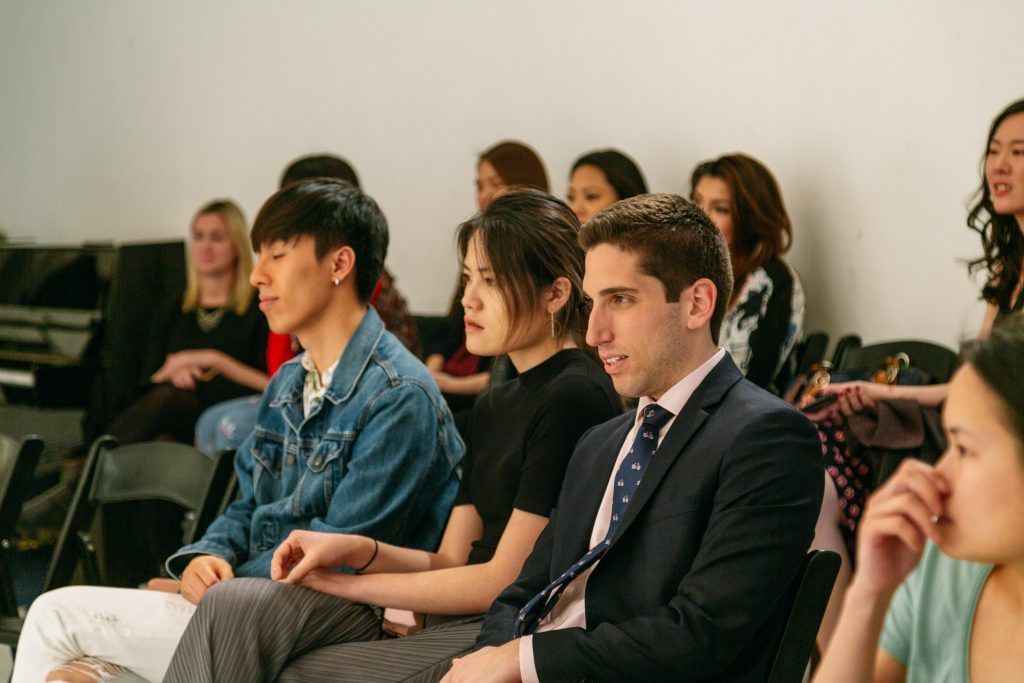Asian And Asian American Representation In Media: A Call For Deeper Storytelling

Table of Contents
The Prevalence of Stereotypes and Tropes
The media landscape is littered with harmful stereotypes related to Asian representation. These tired tropes, far from being innocuous, contribute to real-world prejudice and discrimination. The insidious “model minority” myth, for instance, pits Asian Americans against other minority groups, ignoring the struggles faced by many within our communities. This stereotype in Asian representation often overshadows the realities of poverty, systemic racism, and limited opportunities faced by many Asian individuals.
-
Examples of the "model minority" myth in media: The overrepresentation of high-achieving, docile Asian characters in academic settings, often presented without flaws or complexities. This ignores the struggles of Asian students facing immense pressure and the systemic barriers that can affect their success.
-
Analysis of the hypersexualization or fetishization of Asian women in media: From the submissive "China Doll" to the hypersexualized geisha, Asian women are frequently reduced to objects of desire, devoid of agency or individuality. This objectification contributes to harmful fetishization and real-world consequences.
-
Discussion of the portrayal of Asian men as emasculated or asexual: The depiction of Asian men as nerdy, effeminate, or perpetually marginalized reinforces negative stereotypes that undermine their masculinity and contribute to a lack of representation in leading roles.
-
Examples of harmful stereotypes in children's media: Even in media aimed at young audiences, harmful stereotypes can be subtly embedded, shaping children's understanding of different cultures and ethnicities from a young age. This early exposure to biased representation can have lasting effects.
The Lack of Diversity Within the Asian Community
The Asian community is incredibly diverse. It encompasses a vast array of nationalities, ethnicities, religions, and socio-economic backgrounds. Yet, media often presents a homogenized view, neglecting the unique experiences and perspectives within this expansive group. This lack of diversity in Asian representation prevents audiences from gaining a full understanding of the richness and complexity of Asian cultures.
-
Discussion of the underrepresentation of Southeast Asian communities: The experiences of individuals from countries like Vietnam, Laos, Cambodia, and the Philippines are often overlooked, perpetuating a skewed and incomplete picture.
-
The lack of representation of LGBTQ+ Asian individuals: The erasure of LGBTQ+ Asian experiences reinforces the idea that these identities are somehow less valid or less "Asian."
-
The limited portrayal of disabled Asian individuals: The underrepresentation of disabled Asian individuals further marginalizes this community, neglecting their contributions and experiences.
-
Examples of media that successfully depict this diversity: While rare, some media productions have successfully shown the diversity within the Asian community, proving it's possible to showcase authentic Asian experiences. These examples should be highlighted and emulated.
The Importance of Authentic Storytelling and Cultural Sensitivity
Authentic Asian representation requires the active involvement of Asian and Asian American creators. Their lived experiences and perspectives are crucial in shaping narratives that resonate with authenticity and avoid perpetuating harmful stereotypes. Consulting with cultural experts is vital to ensure accuracy and avoid unintentional offenses. Authentic Asian representation is not just about representation; it's about ensuring accuracy and understanding.
-
Examples of films and shows that showcase authentic Asian experiences: Highlighting successful examples inspires others to create similar, high-quality content.
-
Discussion of the benefits of including Asian and Asian American writers, directors, and actors: The importance of having decision-making power to accurately portray their experiences.
-
The importance of nuanced character development that goes beyond stereotypes: Characters should be three-dimensional, complex, and representative of the broad spectrum of human experience within the Asian community.
-
The responsibility of media companies to promote authentic representation: Media companies must actively seek out and support Asian and Asian American creators and stories.
The Impact of Media Representation on Society
The consequences of negative stereotypes extend far beyond the screen. They contribute to real-world prejudice, discrimination, and the perpetuation of harmful societal biases. The mental health effects of stereotype threat on Asian and Asian American individuals are significant, impacting self-esteem, identity formation, and overall well-being.
-
Examples of how media stereotypes contribute to real-world discrimination: Illustrate how negative portrayals translate into prejudice and discriminatory actions in various spheres of life.
-
Discussion of the impact of media representation on self-esteem and identity formation among Asian and Asian American youth: The importance of positive and accurate representation for the development of healthy self-images and identities in young people.
-
The role of media in shaping public perception and policy: Media representations can influence public opinion and even inform policy decisions concerning Asian communities.
Conclusion
The persistent underrepresentation and stereotypical portrayal of Asians and Asian Americans in media are not merely aesthetic issues; they have profound societal consequences. Addressing the prevalence of harmful stereotypes, ensuring diversity within Asian representation, and promoting authentic storytelling are crucial steps towards creating a more equitable and inclusive media landscape. We need to demand better from media producers and consumers alike.
We urge you to actively seek out and support media that accurately and respectfully portrays the Asian and Asian American experience. Engage in discussions around Asian and Asian American representation, and support creators committed to authentic storytelling. Let's work together to improve Asian and Asian American representation in media, ensuring that our diverse stories are finally told truthfully and completely.

Featured Posts
-
 Herthas Decline Boateng And Kruse Offer Contrasting Analyses
May 11, 2025
Herthas Decline Boateng And Kruse Offer Contrasting Analyses
May 11, 2025 -
 Marvels Nova The Henry Cavill Casting Rumor Explained
May 11, 2025
Marvels Nova The Henry Cavill Casting Rumor Explained
May 11, 2025 -
 Jessica Simpson Back On Stage A Performance 15 Years In The Making
May 11, 2025
Jessica Simpson Back On Stage A Performance 15 Years In The Making
May 11, 2025 -
 Hotel Transylvania Exploring The Films Characters And Locations
May 11, 2025
Hotel Transylvania Exploring The Films Characters And Locations
May 11, 2025 -
 Millions Made From Office365 Hacks Federal Investigation Reveals Masshtabniy Vzlom
May 11, 2025
Millions Made From Office365 Hacks Federal Investigation Reveals Masshtabniy Vzlom
May 11, 2025
